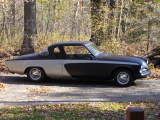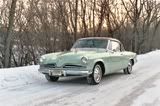Has anyone installed a fuel injection pump in their Avanti gas tank? Any photos,insight, or suggestions to this from your experience?
Did you do it yourself, or use Rock Valley, or another supplier?
Did you do it yourself, or use Rock Valley, or another supplier?



 So far the replacement one has been fine.
So far the replacement one has been fine.
Comment